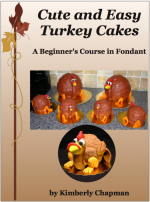I decided to make a nice big roast chicken dinner on Sunday, so on Friday I took the organic 5lb-ish chicken I had in the freezer out to thaw in the fridge. By Sunday it was mostly thawed, so I put it out on the counter to finish thawing and warm up as I worked. This is important because, as you’ll see later, there was uneven cooking and I want to assure everyone right now that being frozen was not to blame. The bird was completely room temperature, even in the cavity, before I began the following work.
Peo’s been on a bit of a carrot kick lately, which I wish I could attribute to my genius parenting skills, but sadly came from enjoying carrots in a Marie Callendar chicken pot pie when we ate tons of processed foods in February. February is cake show month so the kitchen gets taken over by showcake construction, which is part of why I won’t be making another large one any time soon.
Anyway, she’d rejected the carrot souffle recipe I got from a neighbour before, even though the original recipe was so sweet it was practically carrot cake. But Peo said she wanted to try it again, so I figured this would be the right meal for that.
I also had a hankerin’ for some parsnips. We discovered them recently and they are oh-my-god-good. Seriously, if you enjoy foods in the cinnamon/nutmeg flavour group, you will like parsnips. Plus they’re healthy. So give the methodology below a go with your next oven-based meal.
My reason for roasting chicken generally comes down to a desire to have mashed potatoes and gravy, so that had to be on the menu as well. In fact, for several years now I’ve been putting up with my roast chicken problems just to get to the potatoes and gravy. I’m not sure what other people like in chicken gravy, but for me it’s all about goopy-salt-fat-nummy goodness.
Lastly, I had a box of corn bread stuffing mix, so I made that as well. I like the store brand because it has no HFCS, tastes good, costs 98 cents, and comes out delicious when toasted up in the oven.
I started with the carrots, because they had to boil for 20 minutes before prepping the souffle and then that had to go in the oven around the same time as the chicken. Here’s the souffle recipe, adapted to our tastes with vastly reduced sugar (the original called for a cup and a half):
Carrot Souffle
Source: Unknown, other than my neighbour printed it out from me after getting it from someone named Julie.
1.5-1.75 lbs carrots (I always throw an extra in because I know I will be eating some as I chop!)
1/2 cup butter
3 large eggs
1/4 cup all-purpose flour
1 1/2 tsp baking powder
1/4 cup sugar
1/4 tsp cinnamon
Chop the carrots into chunks as shown in the photo (the recipe suggests “baby” carrots but there’s no such thing; there are different varieties of carrots but what’s generally sold as “baby” are just regular carrots lathed down smaller for extra cost, so take two minutes and peel your own carrots to save money). Don’t they look lovely, glowing orange like that?

Chopped carrots. Pretty healthy, pretty tasty, pretty pretty.
Boil the carrots for 20-25 min, until tender. Drain. They still glow beautifully.

Hot steamy carrot lovin'.
I like to let them cool off a bit so they’re not too hot for the next step and risk curdling the eggs. I moved on to other tasks, but to complete the recipe, next you add everything else into the food processor and combine until smooth, scraping down the sides as needed. Spoon it into a 1.5 qt lightly greased baking dish and bake at 350°F for an hour and ten minutes or until set. However, I did it at a slightly higher temp this time, which I’ll address below, and it turned out just fine.
Basic Roasted Parsnips
While the carrots cooled in the strainer, I prepped two parsnips. For those unfamiliar with them – which will be many in North America – they look like this:

Parsnips look like white carrots.
You can generally find them near carrots in the grocery store. Peel them, then cut them in half like this:

This is about when you notice the rich aroma and wonder who is baking nutmeggy muffins.
Then cut the lower half into two or three strips, not too thin:

Choppa choppa.
Then do likewise with the top, trying to make the pieces as even as possible with those from the bottom:

Smell your hands now. That delicious scent is a vegetable that's good for you. SCORE!
Toss them in a drizzle of olive oil in a small baking dish and salt liberally (we prefer kosher salt but regular will do):

A small dish like this fits easily around or under others, saving valuable oven space.
Set that aside until you’re putting the other long-term dishes in the oven. Roast along with any meat, best done at a temperature of 350°F or higher for at least an hour.
This is when I started dealing with the chicken which, as I said, was room temperature. My scale only goes to 4 lbs but I knew I bought this chicken bagged with another at Costco and the two together were just over 10 lbs and felt about even, so I figured it was safe to assume the chicken was about 5 lbs. I Googled around for some recipes and advice on cooking a 5 lb bird, because while I used to do so successfully all the time years ago, sometime around 2007 or 2008 I started having problems: I suddenly could never get the leg and/or wing joints fully cooked without severely overcooking the breasts. I figured I should consult some masters, so I read up on 5 lb roast chicken recipes all over the web and while seasonings varied, most came down to roasting it in a 400°F or 425°F oven for an hour or so. I printed out this recipe as a guide even though I didn’t use the same herbs. Having noticed that Martha Stewart, Alton Brown, and Jamie Oliver all had versions that used lemon and/or garlic, I decided to experiment with that.
As per the printed recipe, I heated the oven and the roasting pan to 400°F. Then I halved a small lemon and juiced one half, which gave me just over a tablespoon of juice. (I really like this little shot glass measuring cup, especially for pouring out of heavy sauce bottles. Amazon has a few varieties but I found mine at a discount kitchen store many years ago for $5.)

Half a small lemon juiced.
Then I prepped some garlic cloves. Tip: it’s not hard to peel garlic if you chop the tips off of each end first, because most of the time the skin will split and you can pull it right off. In the few cases where it doesn’t, slice down it on one side and it’ll pop off.

Chop the ends off and the skin will usually split and be easy to remove.
Having read different recipes, I went with about this much:

Garlic. Yum. And I'm vampire-safe. Woot!
I put another small bowl of equal size on top and pressed down to crush it, lifting it off and re-arranging the pieces a few times for even smashing:

Smashy smashy means lots of flavour but less heat.
Then I poured in the lemon juice and about 2 tsp of olive oil over the garlic, mixed it up, and let it sit while I washed the chicken inside and out. I also put my fingers between the breast skin and the meat to loosen it, and cut off the lump of fat just inside the cavity:

That lump of fat stuck to one side is useful. Don't throw it out!
I always save that piece of fat for use later, setting it aside on the cutting board until I’m ready to deal with it.
At this point I put some of the smaller garlic cloves under the breast skin and rubbed a lot of the garlicky-lemon-oil under there as well. I put the rest of the cloves and the chunks of lemon inside the cavity. Then, as I have always done, I used a couple of toothpicks to seal the neck hole (if there’s enough skin, one is enough, but in this case I needed two):

Closing the neck hole with toothpicks.
I did likewise with the cavity hole and trussed the legs and folded the wing tips back as always, rubbing the whole skin with the olive-oil-lemon mix as I went.

Trussed up bird.
I then drizzled a little extra olive oil on the skin as per the recipe, and liberally salted it all over.
This new methodology I was trying from the recipe echoed something I’ve seen on America’s Test Kitchen: starting the roast on its side and rotating. It also said to pre-heat the pan with the oven, so I did that too. I’d never put a chicken on its side before…it kind of looked pathetic and helpless there:

Aw, poor birdie. This just looks mean now.
Meanwhile, I took that lump of fat I’d set aside and scored it on both sides with a sharp knife to increase its surface area, then put it in a pot on low heat to render as much fat out as possible:

Scored fat lump in a pot. Not very enticing yet, I know. I am going somewhere with this, though.
I have worked this technique out over many years and independent of whether the entire roast turns out or not, this always works to give a bit more fat for a crispy skin and for turning into gravy later. By scoring the fat instead of cutting it up, it’ll render well but come out easily in one lump instead of ending up as unpleasant chunks in the gravy. But if you heat up the sheet of fat without scoring, when it curls up it keeps much of the surface area away from the pot and you don’t get as much fat out. This way, when it curls, there’s still more in contact with the pot and lots comes out:

I feel like jellyfish tonight, like jellyfish tonight...
While the fat rendered, I did as the recipe said and turned the bird at 5-minute intervals at 400°F. But because the carrot souffle was supposed to go at 350° and for longer than the chicken, I split the difference and lowered the temperature to 375° as I put it in and set the timer for an hour and ten minutes. The chicken had had 15 minutes at the high temperature at that point. I also put the parsnips in at this time.
About five minutes later, I could see that the fat had rendered as much as possible, so I removed the lump, took the chicken back out, and drizzled the fat over the breast.
I made the stuffing and put that in a pyrex bowl in the oven as well to toast up, and somewhere during the hour I chopped and boiled two russet potatoes. Then I mashed those with a dollop of margarine that I particularly like even better than butter for this application, some minced cloves of garlic, some freshly grated parmesan, 2 oz of leftover heavy cream I had from the ganache for the Ugly Cake Balls, and a great deal of kosher salt.
About two-thirds through the cooking time, I removed the twine from the chicken’s legs as always.
When the hour and ten minutes were up, I checked the temperature of the breast and the thigh with an instant-read thermometer. The breast read at 165°F, which is done, but the thigh was only 176°F, which was slightly underdone. I flipped it breast-down, removed the souffle which was done, and put the temperature back up to 400°F. I added a little bit of water to the bottom of the pan because the fat was starting to smoke, and to begin de-glazing the fond. The chicken was on a rack and the water didn’t touch it.
The chicken cooked for an additional 10 minutes and the back skin noticeably changed colour. I took the temperatures again and it appeared to be done, so I put it on a cutting board with foil over to rest. I put all of the side dishes in the oven to keep warm but turned it off.
Pan Chicken Gravy
Then I made gravy as I always do, loosely following the way I learned from the Better Homes and Gardens cookbook: I scraped the pan, loosening all of the fond, and poured all of water/fat/fond into a 2-cup Pyrex measuring cup. I skimmed off 1/4 cup of fat and put that into a pot, then skimmed off the rest of the fat and discarded it (if more gravy is needed, you can use that fat as well and double everything else). I mixed 1/2 cup AP flour into the fat with some salt to make a roux and began slowly heating that while adding enough water to the remaining juices to make 2 cups total. As the roux cooked, I slowly added little bits of the juices at a time, stirring thoroughly the whole time, until it came out as a velvety smooth gravy:

This is the real reason I make this meal.
I like my gravy thick and salty. Other people won’t like it that way, so they should modify the recipe accordingly.
When the gravy was ready, my husband cut the chicken. I completely forgot about this new blogging thing and failed to take a photo of the bird, but I assure you, it looked lovely. Here’s the breast:

Doesn't that look scrumptious?
The temperatures were right, the legs were loose and came off cleanly, so imagine my heartache when my husband got to the wings and saw this:

That's blood, folks.
That’s not slightly pink. That’s underdone. When I put the wings on a plate, blood came out. Upon further inspection, the breast meat was overdone in places and had similar pink bits. How is that even possible? How can it be overdone and underdone in the same place?
I am at a loss with this. I never used to have this problem but now it’s every time, every bird, every roasting methodology. I am open to advice but hubby and I have talked it out and we are stumped.
We microwaved the chicken pieces, which does the job but makes them more rubbery and loses all the crispness of the skin. As for the lemon and garlic, you could sort of kind of taste it in the meat, but hubby’s verdict was that it wasn’t detectable enough relative to the effort.
The sides all came out wonderfully, at least. The carrot souffle was slightly dark against the pan for having been done at a higher temperature, but tasted good. The mashed potatoes and gravy were perfect. The stuffing was awesome, especially for a box mix. And the parsnips, oh the parsnips, they were heavenly.

So tasty, I keep drooling at the photo.

When you roast the whole package, everybody gets the tasty crunchy bits!

Veggies don't get much better than this. Simple and delicious.
So the only thing wrong with the chicken dinner was the chicken. It’s heartbreaking to keep trying to fix a problem I never used to have, with so much effort always turning up a negative.
The next time I feel like giving it a go, I’ll try a smaller chicken. That means no more Costco double packs because those are always larger birds. I’ll see if I can find a reasonably-priced pastured one around 3 lbs. Pastured chicken tastes so much better than factory-farmed (otherwise the cost would put me off despite my environmentalism), so here’s to hoping maybe it’ll cook better too.
At least the meal was good, and we’re having the leftovers tonight.

Nom nom nom.
Evidence consumed. Nom nom nom.












I don't ever make soup without at least one or two parsnips. LOVE LOVE LOVE them.
That carrot souffle looks NOMMY.
It is. I highly recommend it!
Most of my family love parsnips too. I was told that they grow really slowly – that's why they're less available than carrots.
I've heard they're more popular/normal in the UK.
Thanks for some great ideas. I plan to try the carrot souffle and also the parsnips very soon. Don't know if my family will eat them but if not more for me.
Peo won't eat them so I make enough for Corran and I. It's so easy to add more or do less as required.
Mmmmmmm…parsnips. We love making parsnip and sweet potato "fries." (We don't fry 'em, just toss 'em in EVOO and roast 'em in the oven.)
I tried to get Peo to eat parsnips as oven fries doe as you describe but she was too slick for that trick. But hrm, I wonder if maybe I tossed them in flour first to give 'em a crispy coating…ooo, more experimenting is required soon!